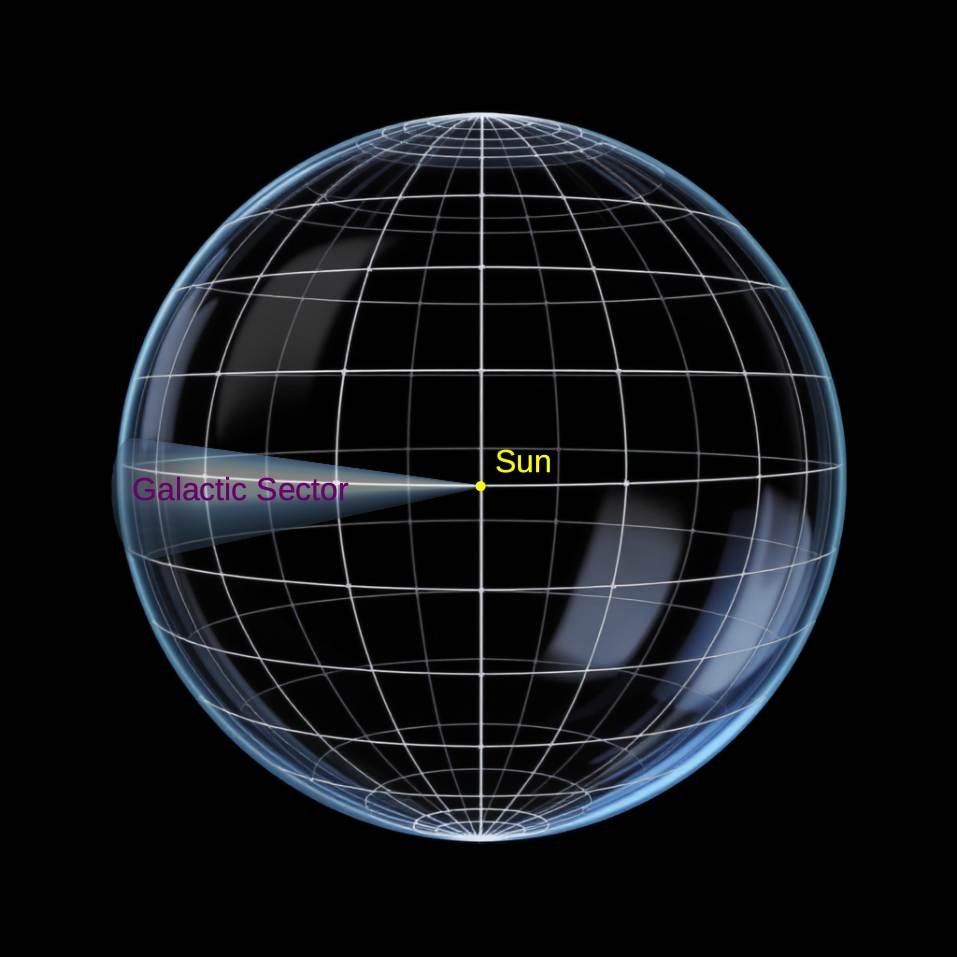A map of the milky way.
Once terrestrial civilisation starts expanding into space, we need a way to talk about it, the different regions where history unfolds, where our stories take place. Who are the beniomata and where do they live? In which direction is Tianlan from planet Earth?
Imagine a starry night, you can see the constellation of Orion. Those stars are truly far from each other, and do not define a meaningful geographical region, but they are all enclosed in a cone that has its vertex on planet earth, where you stand, and circles around them. That is the Orion sector. When you look towards Centaurus, Libra, Gemini, Leo… etc you are looking into the sector of the same name, a cone of space with its apex on the sun.
Sectors have organizational meaning because, once the migration starts in one direction, in all directions, it will constantly go further away from the sun, inside the sectors where it started. Any advance towards the sides, will collide with another wave of migrants who, in the adjacent sector, try to get away from the “Law of life”, harshly imposed by the Geodans.
As migrations progresses through time, stars of great importance will emerge, such as Aldebaran, far away from the beginning of the sector, but until that happens, each sector would have the closest habitable star, and around it the rules for civilization in such sectors would be set. The privilege of the newcomers, you set the rules… until someone else challenges that power.
You can see now how sectors evolve and, whenever I can see Centaurus, I look out for signs of Teo - The Loner, Watanabe, Constantina and all the rest. Centaurus is my favorite sector. Almost without the shade of a doubt. You are most welcome to visit Tantú, the gate to the Centaurus Sector.

